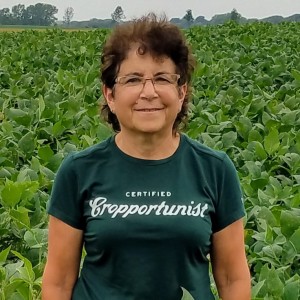 Nancy Kavazanjian
Nancy Kavazanjian
Topics: Agriculture US, Cover Crops, Regenerative Agriculture,
Wisconsin Cover Crops Conference
https://www.youtube.com/watch?v=X5TAPeFzVtg Mark your calendars! - 2022 Wisconsin Cover Crop Conference - February 24, 2022 • Rothschild, W
-
(0)
-
Bookmark
- Comments (0)
 JAMES MSASA
JAMES MSASA
-
(2)
-
Bookmark
- Comments (0)
AgWiki is partnering with Juanita Schools in Jungle, Kenya, to give our viewers a look at education, water, soil health, and food production in a specific region of eastern Africa. Jerimiah Gibbs, Chairman of the Board for Juanita Schools, and Bob Strait - Vice-Chair are interviewed by Randy Krotz, AgWiki's CEO. Bob is also the co-owner of Strait Realty in St. Louis, MO
Read More-
(3)
-
Bookmark
- Comments (1)
-
(0)
-
Bookmark
- Comments (0)
 JAMES MSASA
JAMES MSASA
-
(1)
-
Bookmark
- Comments (0)
 JAMES MSASA
JAMES MSASA
-
(1)
-
Bookmark
- Comments (0)
-
(0)
-
Bookmark
- Comments (1)
 John LaRose Jr.
John LaRose Jr.
Topics: Agriculture US, Education U.S. NorthEast, Economics, Sustainability, Aquaculture/Fish Farming, Fishing (Commercial), Research,
-
(0)
-
Bookmark
- Comments (0)
 John LaRose Jr.
John LaRose Jr.
Topics: Vegetables, Water, Ag Australia/NZ, Renewable Energy (Solar/Wind), Tomato,
Sundrop integrates solar power, electricity generation, fresh water conservation, and production, climate control, and hydroponics to enable the year-round production of premium produce at high yields with consistent quality and deliver a meaningful reduction in fossil fuel and water use through innovative use of renewable energy / low carbon technologies. For each new project developed, Sundrop forms long term partnerships with its customers. This allows the design of customized facilities to precisely meet the customers’.
Read More-
(0)
-
Bookmark
- Comments (0)
 JAMES MSASA
JAMES MSASA
Trade in Tanzania easily by getting all business information procedures to the Tanzania Trade Portal system
Read More-
(1)
-
Bookmark
- Comments (0)


